Mercury Treatment
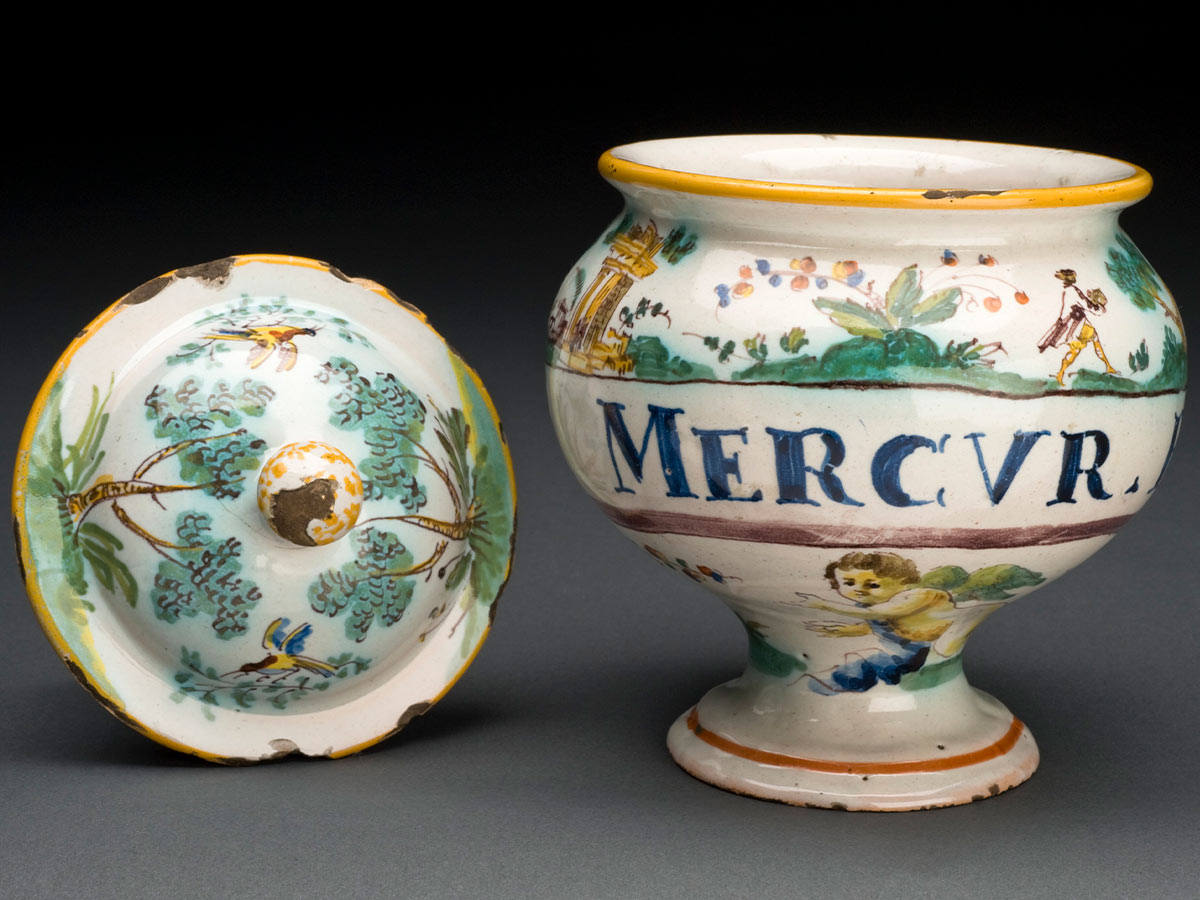
There is evidence that people have used mercury as early as 1500 BC. The shiny, silvery liquid has fascinated humans for thousands of years and was thought to be a miracle cure for literally anything and everything.
From scrapes on your knee to digestive health problems to syphilis, the go-to cure was mercury. Today, we know that mercury is extremely toxic, basically poisoning anyone who ingests it—but for some reason, the deadliness of this substance this didn’t deter ancient doctors.
Insulin Shock Therapy
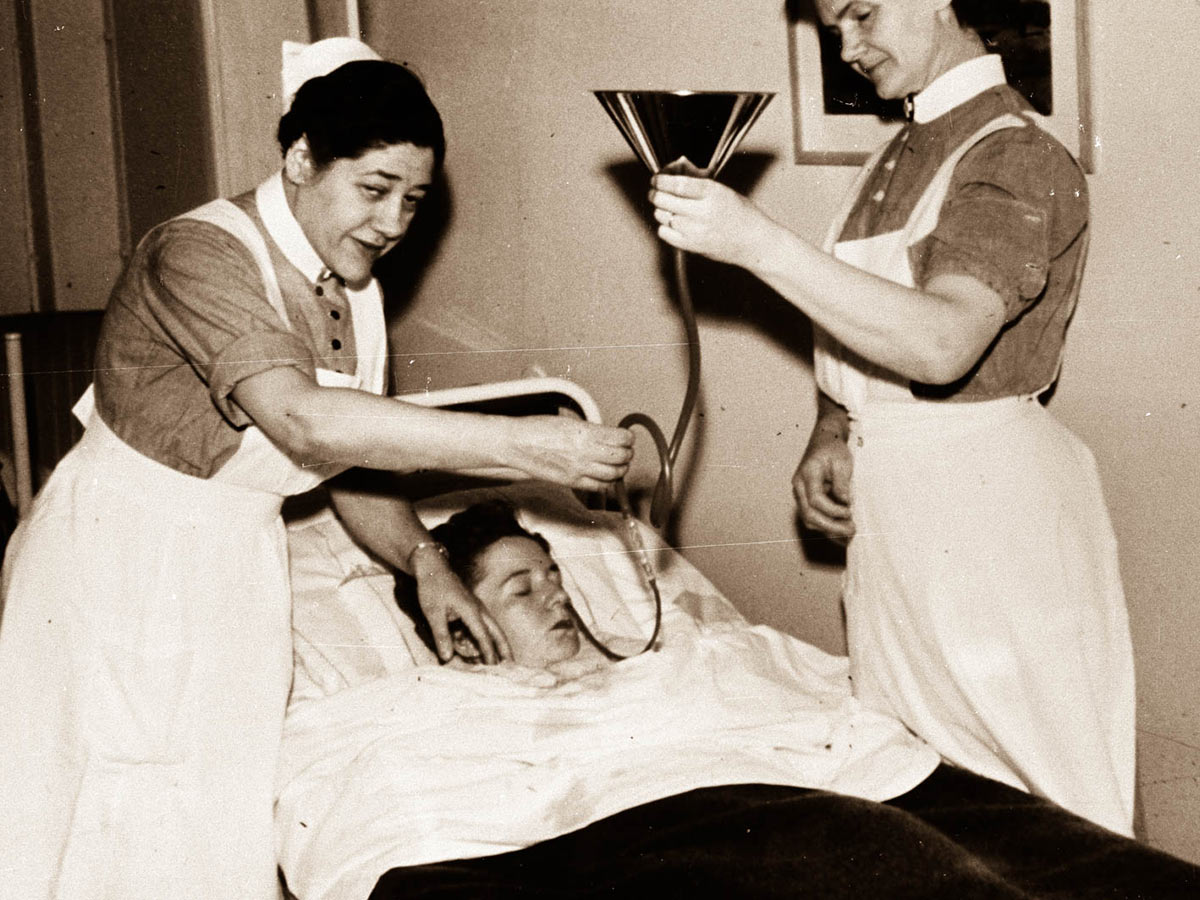
Insulin shock was a form of psychiatric treatment introduced in the 1920s in which patients were repeatedly injected with large doses of insulin, which sent them into daily comas over several weeks. This was mainly used to treat schizophrenia before neuroleptic drugs were introduced in the 1960s.
Soothing Syrup
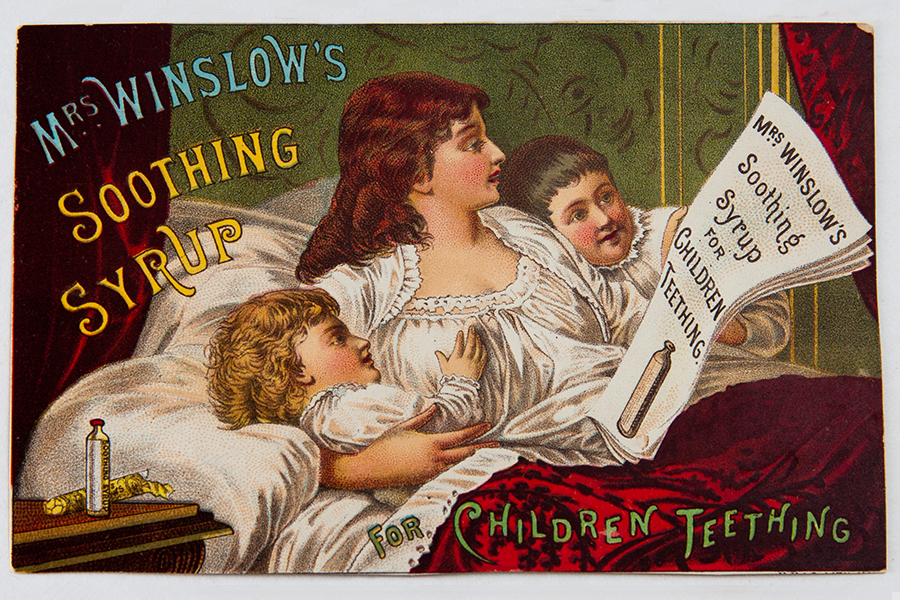
During the 19th century, instead of paying attention to their children, stressed parents would give them “soothing syrups” that would make Lil Wayne jealous. The syrups were full of morphine, sulfate, chloroform, codeine, heroin, opium, and cannabis.
It is estimated that each ounce of Mrs. Winslow’s Soothing Syrup contained 65 milligrams of pure morphine. As a result of these dangerous concoctions, many toddlers died during this time after their parents attempted to self-medicate them for misbehaving.
Leeches

During the 19th century, bloodletting was a very common treatment for basically any ailment you might be suffering from. At the time, doctors believed that too much blood would throw off the balance in your body.
Using leeches to draw blood was thought to restore order. The kicker is, we actually still use leeches to treat certain conditions and injuries today. The proteins that leeches release when they are feeding that can improve circulation and prevent tissue death.
Weird Contraceptives
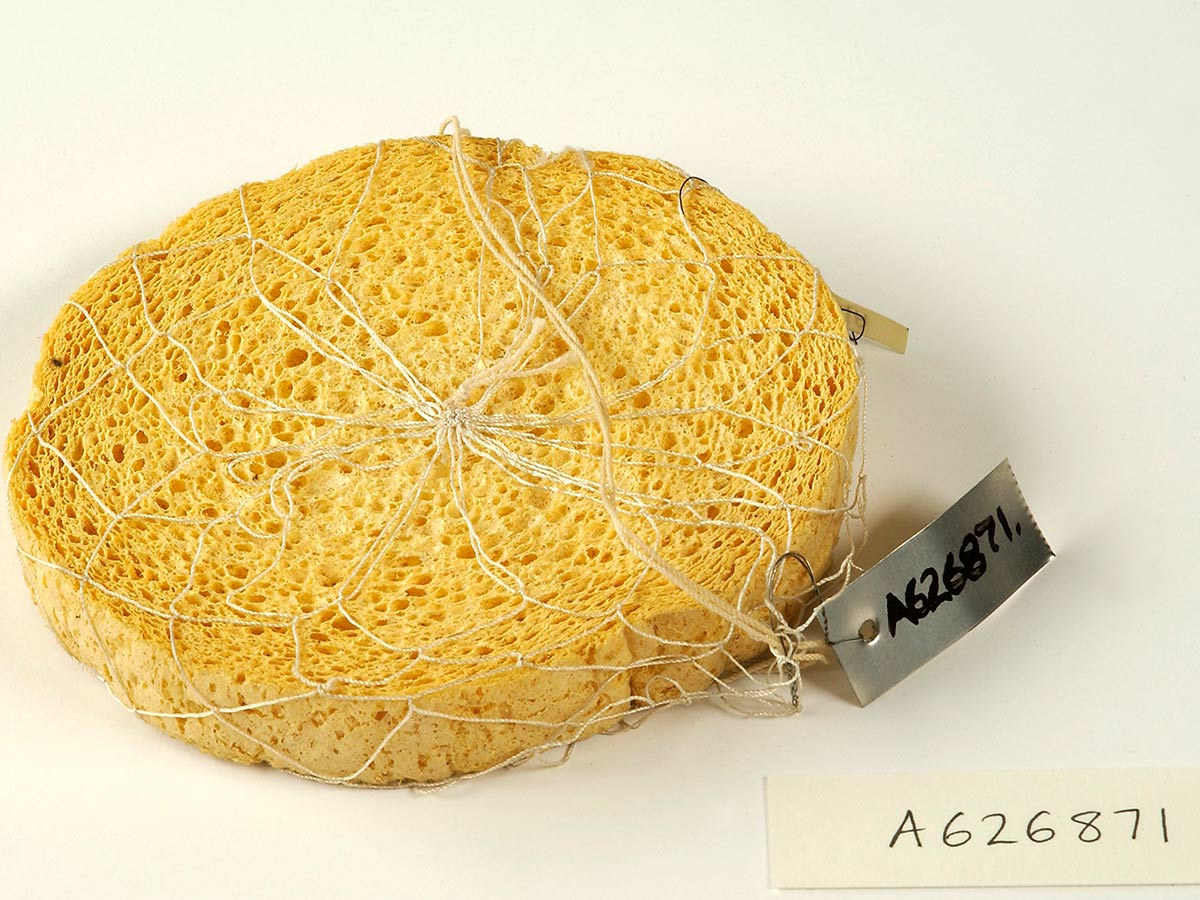
Before condoms were a thing, ancient Egyptians would use animal dung (specifically from a crocodile or elephant) as their contraceptive of choice. The dried dung would be inserted into the female body cavity with the intention of it forming an impenetrable barrier. Other similar contraceptives during this time included lemon halves, tree sap, sea sponges, wool, and cotton.
Electroconvulsive Therapy
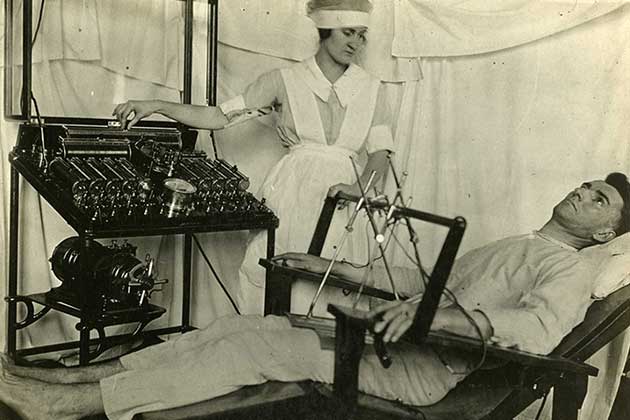
Also known at electroshock therapy, this treatment electrically induces seizures in patients in an attempt to relieve the symptoms of various psychiatric disorders. For years, ECT was performed frequently, and often against the will of the patient. It was used to treat a horrifyingly broad spectrum of things, including “homosexuality,” which was considered a disorder by the medical establishment of the day.
Today we still use ECT as a last-resort treatment in cases of severe depression. But we only do so after all else has failed, and only with informed consent and anesthesia. The side effects can be rough, but ECT does save lives.
Maggot Debridement Therapy

Maggots have been used as a wound treatment for centuries. This is a treatment that is actually still used sometimes today, as it helps to clean out necrotic tissue within a wound while also disinfecting it. However, the practice is still controversial among many doctors.
Heroin
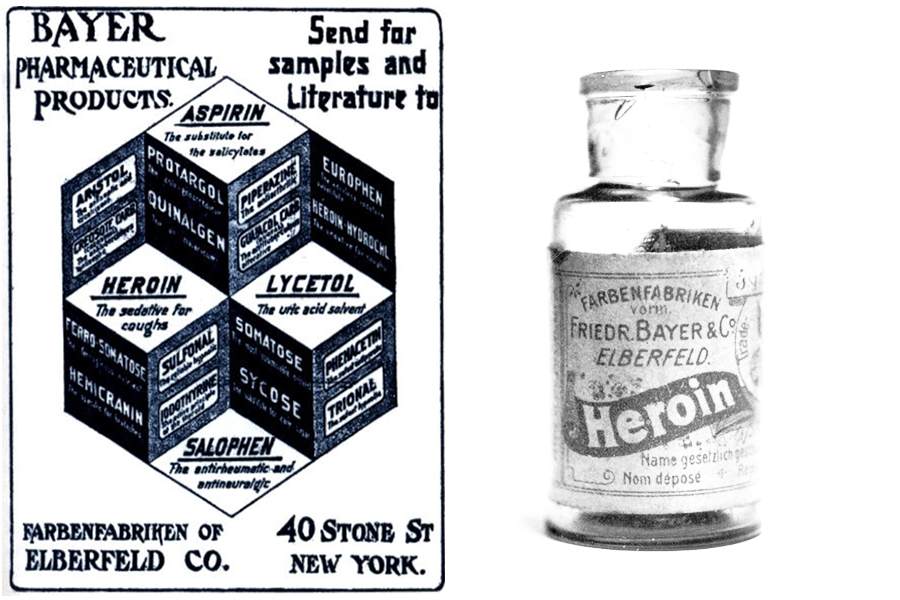
Heroin was originally developed by Bayer, the creators of aspirin. In the late 19th century, the addictive and destructive side effects of this drug were not yet well-established. Therefore, it was used for small ailments such as suppressing a minor cough—which, by the way, it apparently does surprisingly well, as long as you don’t mind becoming a junkie.
Cocaine

Lots of drugs that were illegal now were enthusiastically supported by the medical establishment when they were first discovered. Cocaine was hailed as a miracle drug, and before long a tonic took off that was basically just Bordeaux wine and cocaine. (This brew mutated into Coca-Cola during Prohibition in America, until eventually they took the cocaine out but kept the name.) A huge proponent of cocaine was Sigmund Freud, who prescribed it to everyone until eventually (shakily, we assume) publishing an apologetic retraction.
Lobotomies

The lobotomy may actually be worse than its predecessor trepanning – and it was developed as recently as 1935. This surgery severed the connection between the prefrontal cortex and the rest of the brain. The problem is that we need the prefrontal cortex.
It’s the part of the brain that helps us with complex planning and personality expression, and more – basically, the things that make us human. The surgery fell out of favor by the 1950s, but only after ruining thousands of lives.
“Hysteria” Treatment

As much as we rely on the medical community, they don’t always get it right. One of the most egregiously sexist beliefs held by doctors was the made-up disease “hysteria,” whose symptoms can basically be summed up as “ha ha, women are crazy, amirite?!”
The treatment they eventually settled upon for hysteria was the “hysterical paroxysm." A nice way of saying it would be personal satisfaction. A vibrating device was originally developed as a medical/mental health device, to help doctors whose hands had grown tired from administering so many hysteria treatments. We’ll let you make your own jokes from here.
Cat Dung and Vinegar

Body trends come and go, and “hair or no hair” is a debate that seems to have a different answer every ten years or so. But in 1532, the answer was such a firm “no” that one book recommends a concoction of cat dung and vinegar to burn off body hair. The same book also recommends a solution of arsenic and quicklime for the same purpose…
Electrical Shocks to the Pelvis Region

Today, most treatments for erectile dysfunction involve Viagra or Cialis. But beginning in the 18th century, some people sought to treat ED by blasting their pelvic region with electricity. You could buy a special “Heidelberg Electric Belt” just for the purpose! Astonishingly, the technique seems to be making a bit of a comeback.
Dead Mouse Paste

If you’re an ancient Egyptian with a toothache, what do you do? If you said “smash up a dead mouse and put it on the pain,” well…you’re right, but why on earth would you guess that? Mice also had a reputation for painkillers in Elizabethan England, where they also treated whooping cough, smallpox, and more. That may have had more to do with how many mice they had than it did anything else.
Trepanning
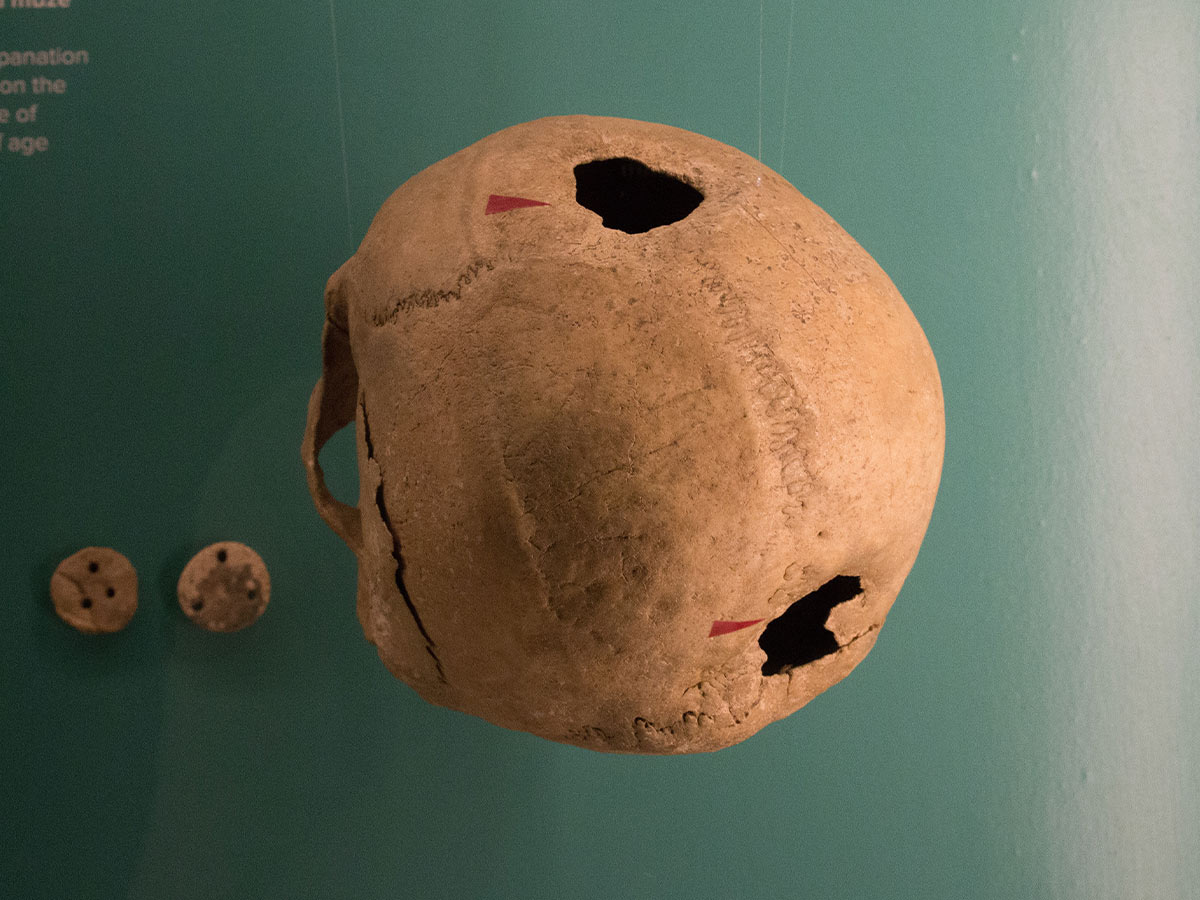
The oldest surgical procedure known to man is called trepanation, which basically involves drilling holes in your skull. Trepanation was most commonly used to treat seizures and migraines—and anesthesia was generally not used during the procedure.
Tobacco enemas
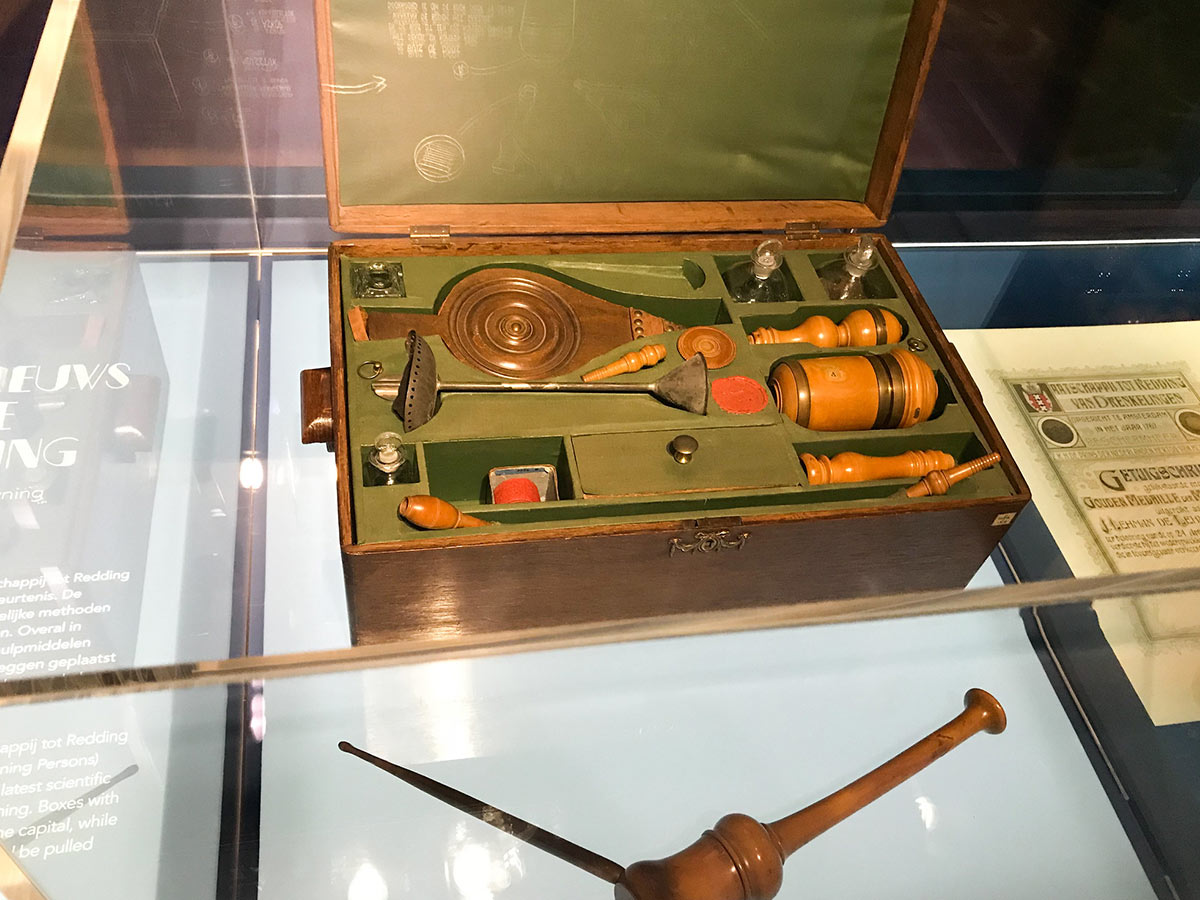
You’ve probably heard “blowing smoke up your ass” as a coarse expression for flattery. But that phrase has a real-world basis. Thomas Sydenham, the “Father of English medicine,” reported seeing Native Americans use smoke enemas to start respiration in drowning victims in the 17th century. He took the practice back to England, where it quickly fell into popular use.
Arsenic
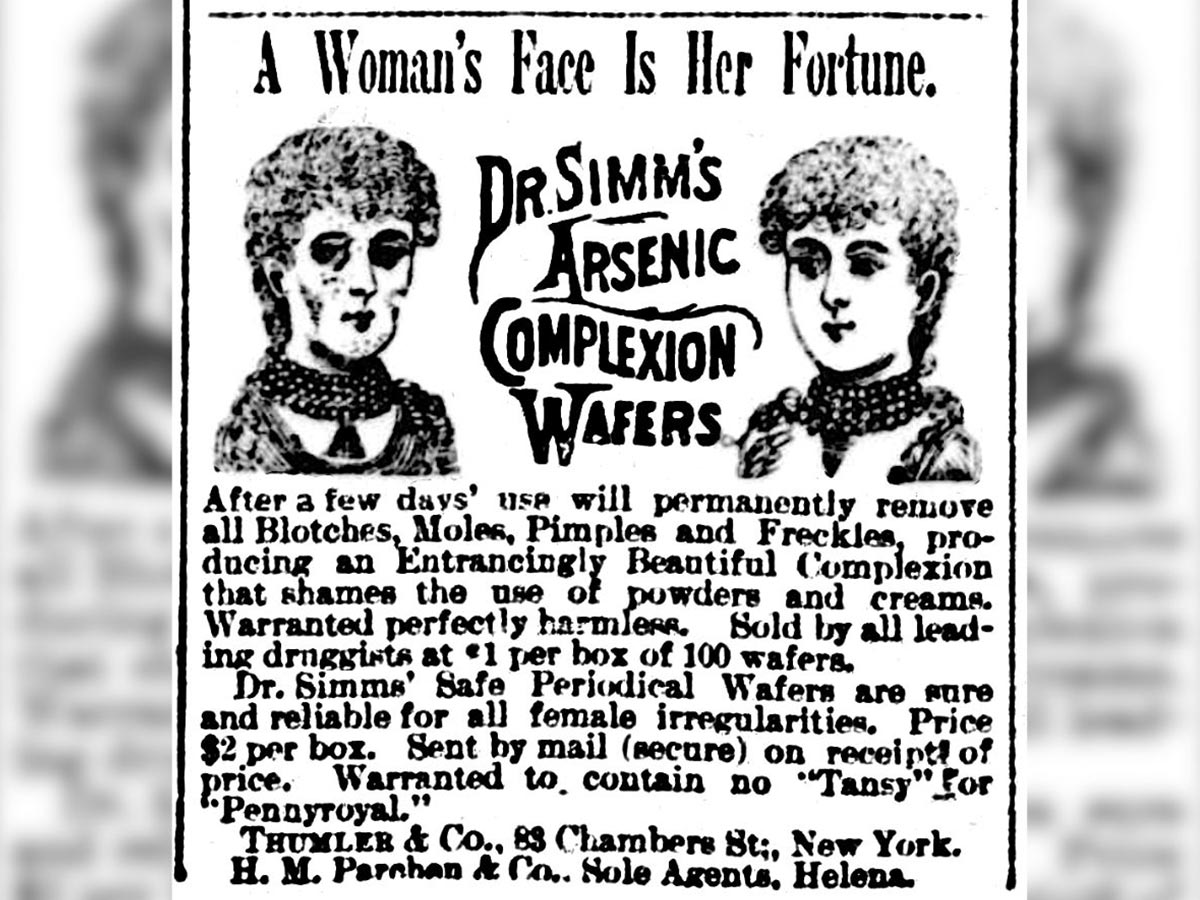
Entire books have been written about how pervasive arsenic was in 19th century Britain. People of the 19th century took in a lot of arsenic on a daily basis without even meaning to, because it was so popular. (A hair analysis of Napoleon suggests he was chock-full of it for most of his life.) But if accidental exposure weren’t enough, doctors were prescribing it for everything from malaria to asthma to cancer.
Lysol For Hygiene and Birth Control
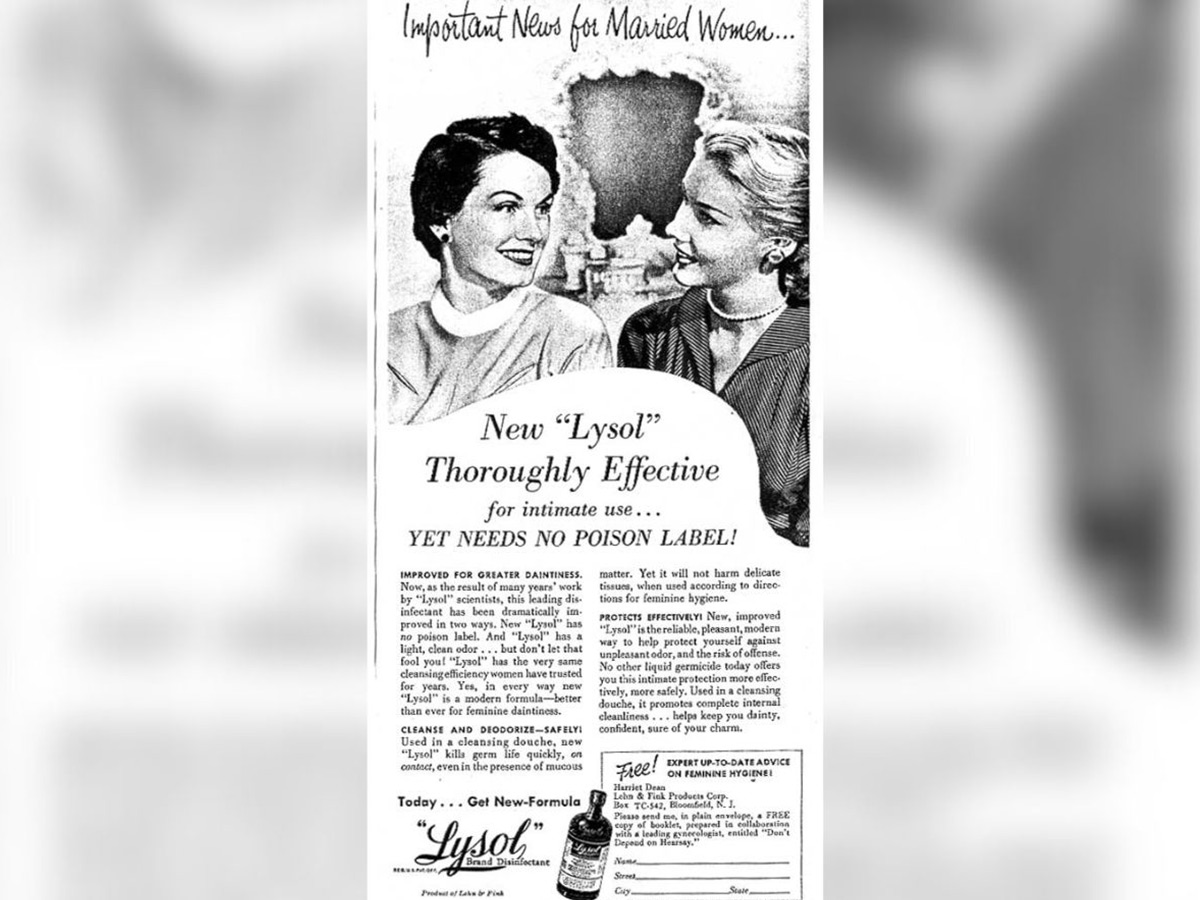
You may be familiar with Lysol, a powerfully corrosive cleaning product that’s covered in warnings not to touch it with your bare skin. But in the 1930s, it was touching plenty of bare skin, and then some.
Lysol was originally marketed as a feminine hygiene irrigator—“feminine hygiene” being lightly coded for “birth control,” which was illegal at the time. Of course, Lysol failed miserably at being a feminine cleanser and as a birth control, but that didn’t stop Lysol from telling women it was gentle, and that it was totally safe to just squirt a ton of it inside themselves.
Getting Malaria on Purpose

In the late 19th century, Julius Wagner-Jauregg was trying to treat mental illness by inducing fever. He induced fever by…wait for it…giving people malaria on purpose. Obviously, that didn’t work, except in one case – treating syphilis.
Wagner-Jauregg’s work came in vogue, and deliberate malaria infection became the go-to treatment for syphilis from 1917 until the 1940s. Malaria was considered safer since it was easier to treat, but the malaria still killed about 15% of the patients. Wagner-Jauregg won the Nobel prize for his breakthrough.
Goat Testicle Implants

John R. Brinkley rose to fame and fortune as one of the wealthiest doctors in America – all with a degree he bought from a sham university for $500. How did he do it? By surgically implanting goat testicles into human scrotums as an impotence cure.
As we note elsewhere in this article, you can talk someone into literally anything if you tell them it will help them have erections. Brinkley’s procedures were dangerous, killing several hundred patients with testicular infections. The next time someone complains that modern society makes stupid people famous, point them to Brinkley.
Tapeworms

So, the tapeworms are iffy, but they come up often enough that they’re worth mentioning. There are a plethora of Victorian ads for weight loss pills that certainly suggest that they contain tapeworm eggs. Tapeworms are a parasite that grows inside you, eating your food before you have a chance to digest it.
They make you waste away, and there’s no way to remove them that isn’t horrifying. The pills may have been placebos meant to fleece the desperate. But even if the practice was never popular, it’s existed on the fringes for a long time. Khloe Kardashian recently admitted to “getting” a tapeworm.
Fart Jars

During the Great Plague of London in 1665-1666, people weren’t sure what was causing the sickness. They thought it was something powerful in the air. (It wasn’t; it was rats.) To combat the miasma in the air, they suggested that people keep air on hand that was equally potent, but safe.
This meant that a city full of people started storing their farts in jars, and occasionally opening them to breathe them in, hoping to keep the Plague at bay.
Cutting Teeth

“Cutting teeth” isn’t just an expression. In 1575, a French army surgeon named Ambriose Pare began cutting the gums of children with a knife, so that the teeth could come in more easily. He came to this method after drawing some...sloppy conclusions from the autopsy of a dead child. Soon the horrifying procedure spread, and a variety of treatments emerged alongside it until people finally went back to letting nature take its course.
Moldy Bread
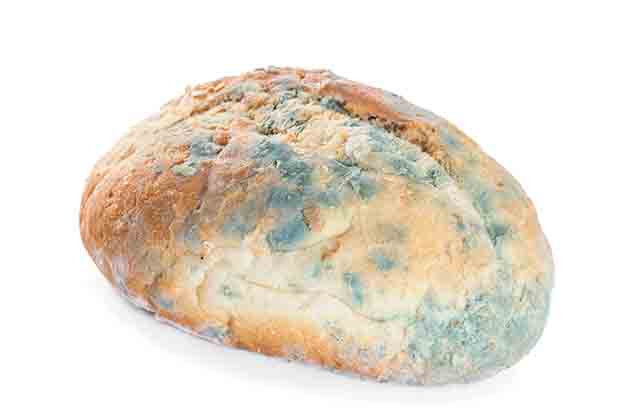
James Allen, curator of Egyptian art at the Met, translated a 4,000-year-old papyrus that, among other things, recommends putting moldy bread on wounds. As gross and weird as that may sound, Allen rightly points out that “They didn’t know what bacteria was, but they were already fighting infections.” It may sound unappealing, but it was centuries ahead of its time.
Red-Hot Hemorrhoid Pokers

Ancient Greek physician Hippocrates whose name gives us the Hippocratic oath that every doctor takes – recommends treating hemorrhoids by heating pieces of iron until they're red-hot, and attacking the hemorrhoid with them until it burns away.
As horrifying as that sounds, we can't just blame Ancient Times folks for being ignorant. "Shoving red-hot pokers into people" was still the go-to treatment in medical texts as recently as 1882. That’s a solid 1400 years of medical treatment that sounds like a threat from a rap song.
Hemiglossectomy
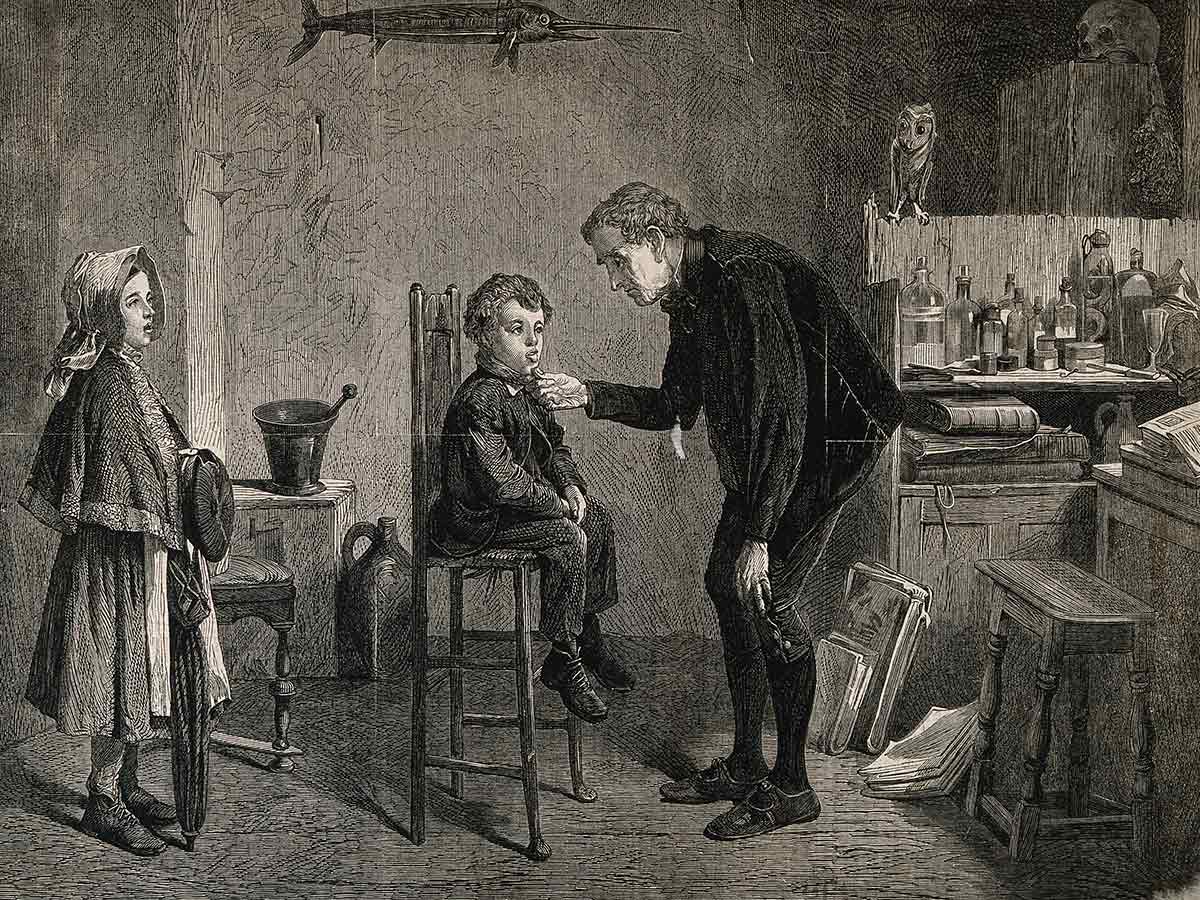
In the 18th and 19th centuries, the “treatment” for stuttering was to just cut off half of your tongue. Not only was this extremely painful, but many times the patients would bleed to death. Today doctors still occasionally remove parts of the tongue, but only to treat certain forms of oral cancer. And nowadays, patients at least have the benefit of general anesthesia, which was not the case hundreds of years ago.
Cigarettes

If you watched Mad Men, you probably know that cigarettes used to be sold with health claims attached. But you might not know that it went far beyond “Doctors prefer Camel cigarettes.” Every brand claimed to be less irritating to the throat.
Lucky Strike claimed their cigarettes could help women lose weight. Philip Morris kept several medical publications afloat with ads exhorting doctors to recommend their brand to patients. And Camels claimed to aid digestion.
Radium
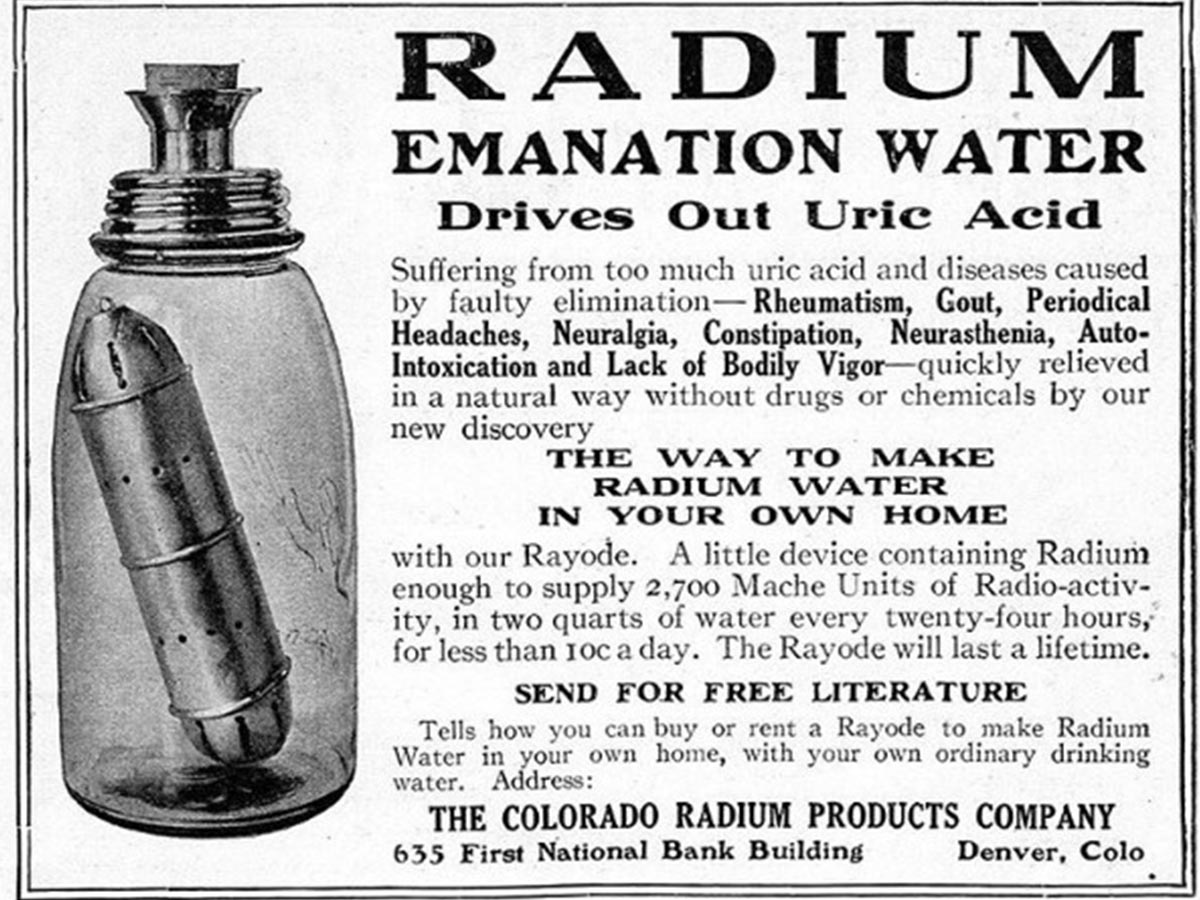
In the early 1900s, radiation was new and exciting, and the newly-discovered element radium was particularly trendy. It was used to make everything from glow-in-the-dark paint to glassware. It was said to treat blindness, hysteria, asthma, and more.
You could even buy a refrigerator lined with a uranium/radium ore that turned regular water into radon water. All of this started backfiring wildly by the 1930s, but for a brief moment, it looked like radiation was the answer to all our ills.
Urine Therapy

Urine therapy began in 1918, thanks to the efforts of British naturopath John W. Armstrong. Because humanity is doomed, urine therapy actually continues to this day in certain alternative medicine circles.
Armstrong believed that drinking your own urine – or rubbing it on your skin – could treat everything from stings to toothaches. Armstrong backed his quackery up with a bit of misappropriated scripture, and when his theories made it to India, a couple of his followers did something similar to Yogic texts to advocate for it there.
The Rest Cure

Some cures for hysteria were fun. But then there was “the rest cure,” which was simply the act of confining women to bed for up to two months, in the exact same position. They weren’t allowed any talking, reading, or other intellectual stimulation.
They were fed to fatten them up, and massaged (or just electrocuted) to prevent muscle atrophy. If all this sounds wildly sexist, well, it absolutely was. Men were also offered the Rest Cure, but they had the option instead of engaging in the “West Cure,” which involved hunting, cattle roping, and other things that don’t involve laying in bed like a coma patient.
Gladiator Blood

In ancient Rome, the blood of fallen gladiators was seen as therapeutic. According to writings by Pliny, Tertullian, and Celsus, people with epilepsy would drink the still-warm blood of the recently fallen in hope of treatment. When gladiatorial combat was no more, the blood of executed criminals became the new beverage of choice.
 Author
Ron Winkler
Last Updated: November 02, 2024
Author
Ron Winkler
Last Updated: November 02, 2024
